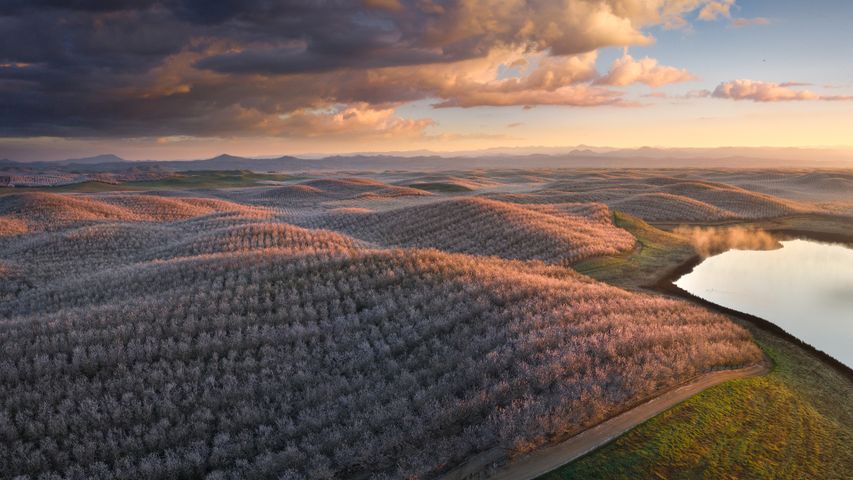Le Morne Brabant, Mauritius
© Hemis/Alam
Getting to the bottom of the underwater waterfall
From this vantage point high over the Indian Ocean, we have a spectacular view of the 'underwater waterfall' formed off the coast of Mauritius. Not a true waterfall, this is an optical illusion - it's really the trails of sand and silt deposits on the seafloor being washed by ocean currents through an opening between coral reefs. But we're probably not alone in thinking at first glance that the ocean is pouring into some massive unseen drainpipe.
Our viewpoint also offers a clear look at the huge basalt monolith in the distance towering over the peninsula called Le Morne Brabant. Originally uninhabited by humans, the island of Mauritius became an important stopover in the slave trade by the 18th century. Some slaves managed to escape while on the island and made their way to the many caves and overhangs on the steep slopes of Le Morne. There, these 'maroons' hid from slave traders and eventually formed enough settlements that Mauritius became popularly known as the Maroon Republic, and Le Morne a symbol of the slaves' resistance, suffering, and sacrifice.
Related Images
Bing Today Images




 Rainbow River in Rainbow Springs State Park, Florida, United States
Rainbow River in Rainbow Springs State Park, Florida, United States
 Blue lagoon of Pulau Ay, Banda Islands, Indonesia
Blue lagoon of Pulau Ay, Banda Islands, Indonesia
 Sea turtle, Fernando de Noronha, Brazil
Sea turtle, Fernando de Noronha, Brazil
 Steller sea lions, Vancouver Island, British Columbia, Canada
Steller sea lions, Vancouver Island, British Columbia, Canada
 Cala Luna beach, Sardinia, Italy
Cala Luna beach, Sardinia, Italy
 Barrier reef off Grande Terre, New Caledonia, France
Barrier reef off Grande Terre, New Caledonia, France
 Mona Vale Rockpool, Sydney, Australia
Mona Vale Rockpool, Sydney, Australia
 Atlantic spotted dolphins near Santa Maria Island, Azores, Portugal
Atlantic spotted dolphins near Santa Maria Island, Azores, Portugal


